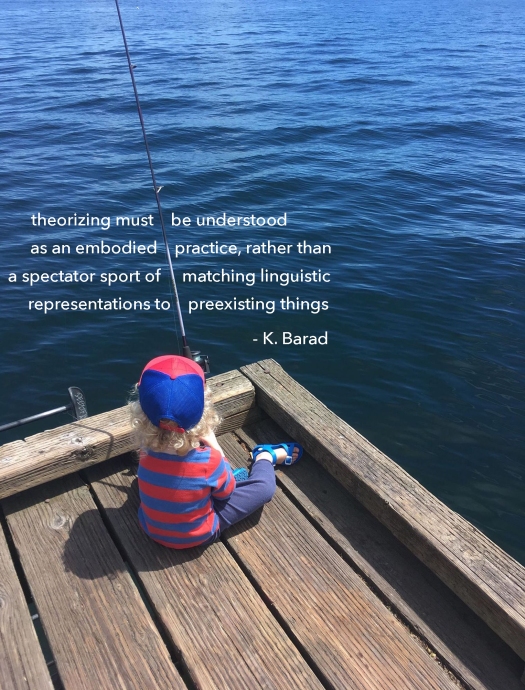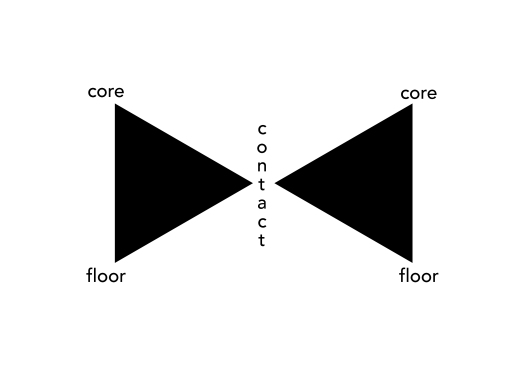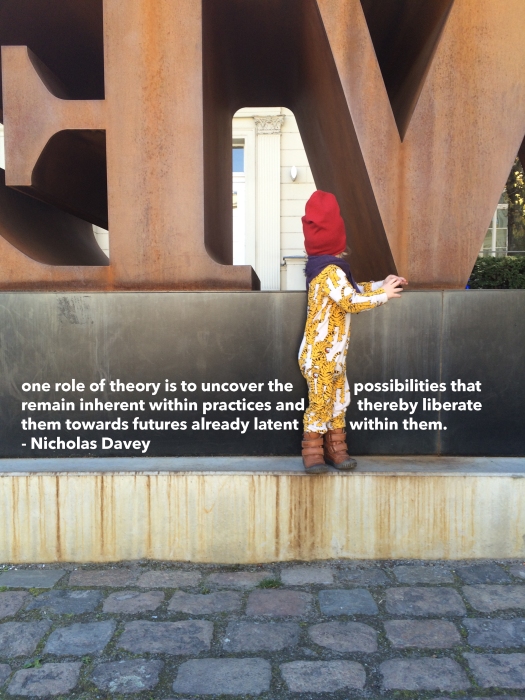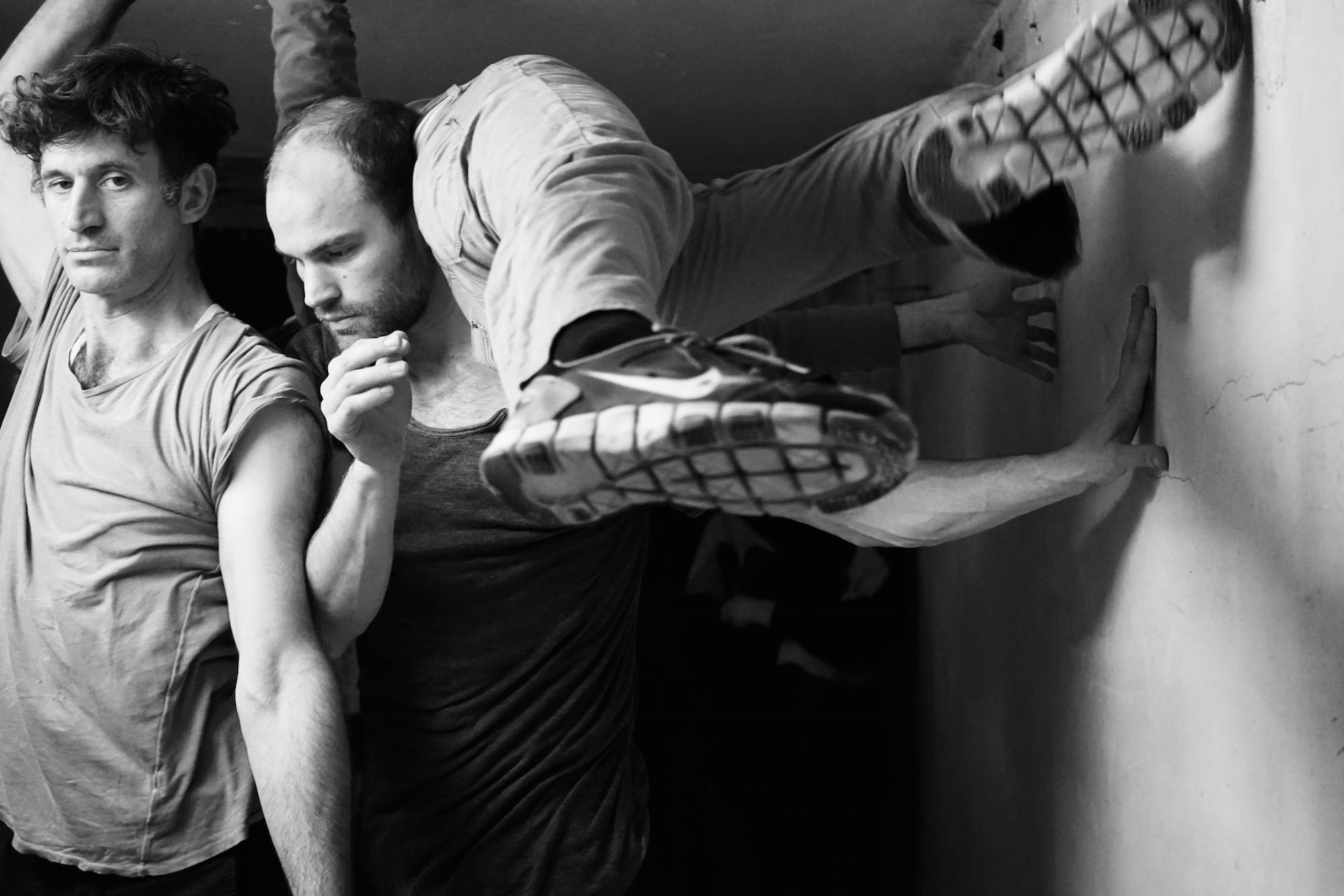
core, floor, contact

The distances between elements can vary.
The number of floor contacts per individual can vary.
The number of contact surfaces between individuals can vary.
Foundations

uncover possibilities

Latent Possibilities

Epistemological Rigor
“Cvejić argues improvisation’s epistemological lack of rigor due to its reliance on the practitioner’s experience within the frame of the ineffable…” Bell, p.111
from Biba Bell’s review of Choreographing Problems: Expressive Concepts in European Contemporary Dance and Performance in DRJ 48/3 December 2016
Merriam Webster defines epistemological as “the study or a theory of the nature and grounds of knowledge especially with reference to its limits and validity”.
By studying improvisation through the lenses of Ensemble Thinking, the Six Viewpoints, Contact Improvisation, & Action Theater, the theory of the nature of improvisation becomes apparent. I would therefore propose that Ensemble Thinking, the Six Viewpoints, Contact Improvisation, & Action Theater could be seen as epistemological rigor. The rigor already exists. The frame of the ineffable does not preclude epistemological rigor. The theories of the aforementioned improvisation practices are embedded (embodied) in the scores of each improvisational methodology. The scores of these practices could be seen as the theories that transcend the ineffable. These theories live beyond the moment that performing disappearance à la Phelan.
“The consequence of the “monopoly” of practitioners’ knowledge in the field is a lack of proper theoretical study, of a comprehensive systematization…” – Cvejic, p. 130
The bias against practitioner’s tacit knowledge is evident in Cvejic’s position. A comprehensive systematization of improvisational epistemology already exists in theories such as Ensemble Thinking, Action Theater, Six Viewpoints, Contact Improvisation, et. al, already exists in the practices themselves. It is her inability to recognize the theories, as a relay between practices with any of the aforementioned methodologies (Deleuze), inherent, embedded, and embodied within each improvisation method.
As to the idea that there is a “monopoly”, well, yes, of course there is a “monopoly”, and rightly so. Physicists create the theories for physics, because they are the ones who study physics. Economists create the theories for economics because they are the people who study economics. Linguists create the theories for linguistics because they are the ones who study language. People who study improvisation (as it relates to dance) create the theories of improvisation. To know it you have to do it.
Ryle was never hugged
People can see, hear and jolt one another’s bodies, but they are irremediably blind and deaf to the workings of one another’s minds and inoperative upon them (Ryle, 2009, p.3)
A Foundation of Training and Practice

Relay

Putting Words in Foucault’s mouth
And to those who might be tempted to criticize [improvisation] for concerning itself primarily with the analysis of the discontinuous, to all those agoraphobics of history and time, to all those who confuse rupture and irrationality, I will reply: “It is you who devalue [choreography] by the use that you make of it. You treat it as the support-element to which everything else must be related; you treat it as the primary law, the essential weight of any [dance-making] practice; you would like to analyse every modification in the field of this inertia, as one analyses every movement in the gravitational field. But according this status to [choreography] you are merely neutralizing it, driving it out to the outer limit of time, towards an original passivity. [Improvisation] proposes to invert this arrangement, or rather (for our aim is not to accord to [improvisation] the role formerly accorded to [choreography]) to play one off against the other; to show how [improvisation] is formed in accordance with the same conditions and the same rules as [choreography]; and how it enters the field of [dance-making] practice. – pg 174
Foucault, M. & Foucault, M., 1972. The archaeology of knowledge ; and, the discourse on language, New York: Pantheon Books.
